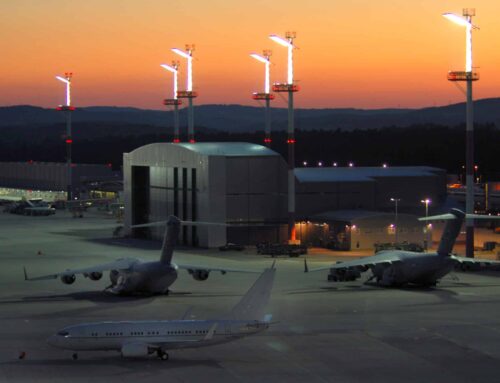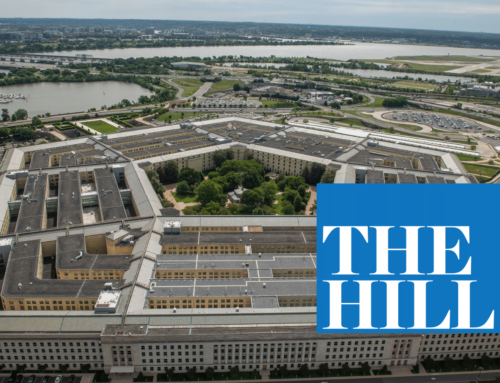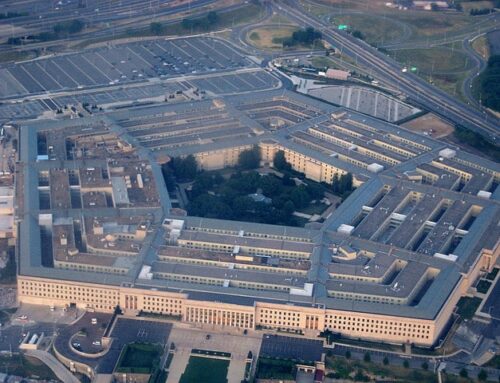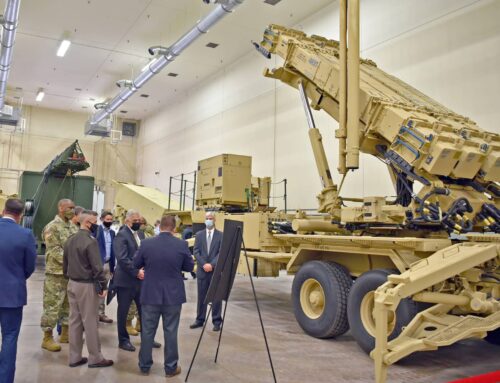Although the Pentagon’s spending report was delivered a month ahead of its congressional deadline, there is a broader concern that the federal government is moving too slowly to address the crisis.
“The fact that this spending is happening now, five months after this crisis started, suggests the Defense Department is woefully unprepared for real biological warfare,” said Bill Greenwalt, a defense consultant who was a senior defense acquisitions official in the George W. Bush administration.
In a statement, Jonathan Rath Hoffman, the assistant secretary of defense for public affairs, said the department continues to “aggressively” identify opportunities to use the Cares Act funding, while emphasizing the need to spend funds responsibly.
“The Department remains committed to legally and responsibly executing these funds on the highest priorities to protect our military and their families and safeguard our national security capabilities,” Hoffman said. “As we have seen, this is an evolving and dynamic situation where priorities and requirements change, which is why it is so important that we remain faithful and accountable stewards of the taxpayer dollar.”
Democratic senators led by Sen. Richard Durbin (Ill.) pressed the Pentagon for greater speed and transparency about its use of funds in a letter sent last week to Defense Secretary Mark T. Esper.
The document obtained by The Post shows that Pentagon plans for the Cares Act money include spending hundreds of millions of dollars on projects seemingly unrelated to the pandemic, including submarine missile tubes, space launch facilities, and golf course staffing.
It also includes aggressive efforts to alleviate the public health crisis in cooperation with other government agencies, although those efforts are being relegated to third priority.
The document indicates the Pentagon wants to play a leading role in developing effective vaccines and treatments for covid-19, the disease caused by the new coronavirus. It projected eventually purchasing 7.5 million doses of vaccine for military service members and their families at approximately $19 per dose, even though no such vaccine yet exists. The department is funding the development of three possible vaccines in its own medical research labs, part of roughly $1.6 billion that is being put toward testing and medical research.
The spending plan includes $4.4 billion for coronavirus-related medical care, including $175 million on basic equipment for military hospitals, including personal protective equipment, masks, ventilators and other items.
And the department is devoting many of its technology development offices toward efforts to fight the disease.
The spending plan includes $22 million for a project to build wearable monitoring devices that can measure disease symptoms and keep track of contagious individuals. The project is being managed by the Defense Innovation Unit, a technology development office founded in 2015 under then-defense secretary Ash Carter.
The department is also deploying Project Maven, an artificial intelligence unit known primarily for rapidly analyzing drone footage, to create an algorithm-based covid-19 surveillance system that can track the spread of the virus around the globe.
The plan includes $3.48 billion for various costs needed to prevent the coronavirus from degrading the U.S. military’s readiness to respond to a national security threat. That includes setting up quarantine facilities for people who are designated “mission essential,” such as pilots and missile crews. Hundreds of millions of dollars is designated for extra IT spending needed to help the military services work remotely, including unspecified “commercial solutions” that would allow remote access to classified computer systems.
Another $307 million is being used to protect Defense Department jobs during the pandemic. The Pentagon identified 55,500 jobs in roles such as food preparation, youth centers and fitness centers that would be at risk of furlough without federal help. That funding includes some jobs at “nonessential” such as bowling alleys and golf courses, according to the spending plan.
It also calls for $1 billion in new spending under the Defense Production Act. That includes $100 million for federal loans to build out the U.S. national stockpile with more N95 respirators, personal protective gear, testing supplies and other items. On Wednesday the Defense Department awarded a $138 million contract for pre-filled syringes to be ready when a vaccine is made available.
But the bulk of that funding is being spent to shore up the military supply chain, primarily to correct problems that are only tenuously related to the pandemic — including $150 million for shipbuilders, including funds for submarine launch equipment and missile tubes; $40 million for hypersonic missile development; $80 million for microelectronics; $150 million for space launch companies, and $62 million for body armor and pelvic protectors.
The funding for defense contractors could be met with controversy if Congress steps up its oversight of Cares Act spending. When the Trump Administration activated the Defense Production Act in mid-March, it was billed primarily as an effort to correct medical supply shortages.
The defense industry has already received help from the Pentagon in the form of improved financing terms.
“A lot of these are things they already wanted or were hoping for before this crisis, and the covid funding sort of came as manna from heaven for the Pentagon,” said Steve Ellis, a former Coast Guard officer who is now vice president for the Taxpayers for Common Sense.
Dan Grazier, a former Marine captain who now works at the nonprofit Project on Government Oversight, attributed the defense industrial base spending to “defense lobbyists leveraging this crisis” on behalf of their clients.
“With millions of people out of work and small business owners across the country worried they will not be able to weather this storm, we should be focusing our efforts at helping them rather than giving handouts to defense contractors,” Grazier said.
Most defense production lines remained open through the worst of the crisis in recent months after the government declared those facilities essential for the national defense.
But numerous defense contractors have struggled to contain coronavirus outbreaks at their factories, and other costs have arisen as they attempt to reconfigure their workplaces and deal with the disruption of having some skilled workers stay home to care for children when schools and child-care facilities closed.
Eric Fanning, who is president of the Aerospace Industries Association and served as secretary of the Army under President Barack Obama, said his organization would advocate for even more funding for the defense industry.
“Everything in the industrial base is suffering in some way from the effects of covid,” Fanning said.
Wes Hallman, a former Air Force official who serves as vice president of policy at the National Defense Industrial Association, another trade group, said the funding is needed to stave off permanent damage to America’s national security.











Get Social